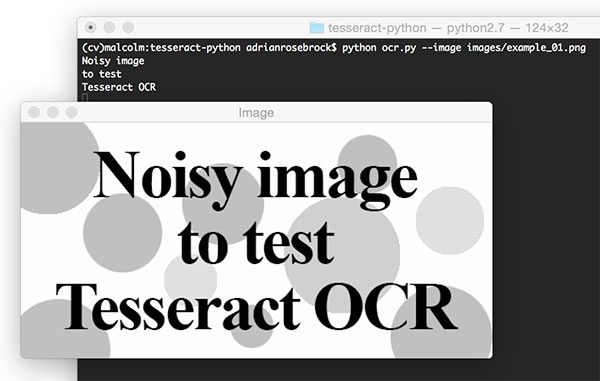
Apr 4, 2018 - I am using Python and open CV. Its is an open source Automatic License Plate Recognition library written in C++ with bindings in C#, Java,. License plate recognition implemented on Raspberry Pi using open source frameworks - OpenALPR and OpenCV. It using the OpenALPR. The Python script processes.
PyANPD pyANPD is a high recall automatic number plate detector based on. For details of the algorithm, check the answer on Stack Overflow.
The detector is robust to orientation. The precision decreases and recall increases if the edge_density threshold is decreased. Dependencies • • Usage python pyANPR.py This outputs an image with the same name with -detected appended. How to tweak it for your dataset? Change aspect_ratio_range (Range of Aspect Ratio for Accepted Rectangles), area_range (Range of Area for Accepted Rectangles), and se_shape (Shape of Structuring Element for Morphological Closing) to the taste of your own dataset.
I have a web site that allows users to upload images of cars and I would like to put a privacy filter in place to detect registration plates on the vehicle and blur them. The blurring is not a problem but is there a library or component (open source preferred) that will help with finding a licence within a photo? Caveats; • I know nothing is perfect and image recognition of this type will provide false positive and negatives. • I appreciate that we could ask the user to select the area to blur and we will do this as well, but the question is specifically about finding that data programmatically; so answers such as 'get a person to check every image' is not helpful. • This software method is called 'Automatic Number Plate Recognition' in the UK but I cannot see any implementations of it as libraries. • Any language is great although.Net is preferred. EDIT: I wrote a for this.
As your objective is blurring (for privacy protection), you basically need a high detector as a first step. Here's how to go about doing this.
The included code hints use OpenCV with Python. Ptk pai sd terbaru senmasa. • Convert to Grayscale. • Apply Gaussian Blur. Img = cv2.imread('input.jpg',1) img_gray = cv2.cvtColor(img, cv2.COLOR_BGR2GRAY) img_gray = cv2.GaussianBlur(img_gray, (5,5), 0) Let the input image be the following. • Apply Sobel Filter to detect vertical edges. • Threshold the resultant image using strict threshold or OTSU's binarization. Cv2.Sobel(image, -1, 1, 0) cv2.threshold() • Apply a Morphological Closing operation using suitable structuring element.
(I used 16x4 as structuring element) se = cv2.getStructuringElement(cv2.MORPH_RECT,(16,4)) cv2.morphologyEx(image, cv2.MORPH_CLOSE, se) Resultant Image after Step 5. • Find external contours of this image. Cv2.findContours(image, cv2.RETR_EXTERNAL, cv2.CHAIN_APPROX_NONE) • For each contour, find the minAreaRect() bounding it. • Select rectangles based on aspect ratio, minimum and maximum area, and angle with the horizontal.